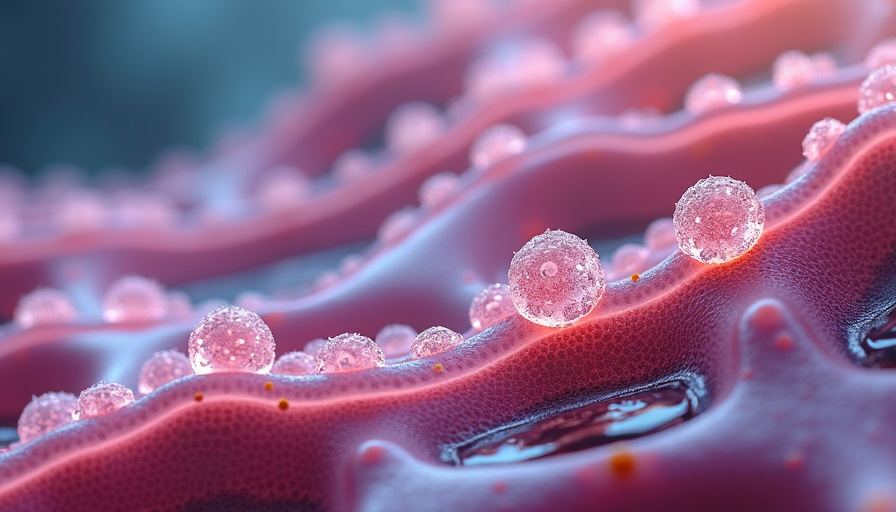
Biomaterials: Revolutionizing Medicine
11/20/2024
Scroll to read
Biomaterials are transforming modern medicine, offering innovative solutions for disease treatment, surgical procedures, and patient care. This article explores the latest advancements in biomaterials, from 3D-printed organs to bioelectronic devices, and their potential to reshape healthcare.
The Evolution of Biomaterials
Biomaterials, designed to interact with biological systems, have been integral to medical innovation for years. Recent advancements have significantly enhanced their precision and functionality, expanding their applications in orthopedics, ophthalmology, regenerative medicine, and more.
Orthopedic Advancements
Titanium and its alloys are widely used in joint replacements due to their strength, durability, and biocompatibility. Ongoing research focuses on developing new materials and techniques to further improve outcomes and minimize complications.
Ophthalmological Applications
Biomaterials have enabled the development of advanced contact and intraocular lenses, meticulously designed for safe interaction with delicate eye tissues, improving vision correction and patient outcomes.
Regenerative Medicine and Tissue Engineering
Biomaterials play a crucial role in regenerative medicine as scaffolds for tissue engineering, promoting new tissue growth and organ repair. Hydrogels, composed of collagen and chitosan, are used to facilitate cell growth and tissue regeneration, offering promising treatments for chronic wounds and organ damage.

3D Bioprinting: Shaping the Future of Organ Transplantation
Bioprinting, a subset of 3D printing, creates complex tissues and organs using living cells and biomaterials. While fully functional bioprinted organs for human transplantation are still under development, significant progress has been achieved.
Recent Breakthroughs
- Vascularized Tissues: Advancements in printing vascularized tissues for organs like the heart, liver, lung, and kidney are paving the way for more complex and functional bioprinted structures.
- Bioprinted Skin: Researchers have successfully created "living" bioprinted skin with vascular function, a crucial step towards developing effective skin grafts.
- Functional Kidney Tissues: While a fully functional bioprinted kidney is still a challenge, scientists have successfully bioprinted proximal tubules, a key component of the kidney's nephron.
- Bioprinted Ovaries: Bioprinting techniques have been used to create ovarian scaffolding, successfully implanted in infertile mice, resulting in healthy offspring.
Clinical Applications and Future Prospects
Bioprinting has vast clinical potential, including creating tissue-engineered organ models for testing therapies and tracking disease progression, potentially reducing reliance on donor organs. Challenges remain in creating sufficiently thick tissues and ensuring long-term viability and integration. Ethical and regulatory considerations also require careful attention.
Bioelectronics: Interfacing with the Nervous System
Bioelectronic medicine uses electrical signals to interact with the nervous system, offering innovative diagnostic and treatment approaches. This field combines neuroscience, molecular medicine, and biomedical engineering to develop devices that modulate neural activity and influence physiological processes.
Mechanisms and Applications
Bioelectronic medicine uses electrical pulses to modulate cellular activities through neural circuitry, providing a less intrusive alternative to traditional methods. Key applications include neuromodulation for personalized medicine, pain management through spinal cord stimulation, and disease treatment via deep brain stimulation.
Technological Advancements
Minimally invasive, wireless, and injectable bioelectronic devices are becoming smaller, more affordable, and more powerful. Wearable electronics offer new ways to manage health conditions without drugs.
Brain-Computer Interfaces (BCIs): Connecting Mind and Machine
BCIs bridge the gap between the human brain and external devices, offering transformative potential for individuals with severe motor disabilities.
Recent Advancements
- Non-Invasive BCIs: Improved EEG and fNIRS technologies provide more accurate and reliable brain signal detection for neurofeedback and cognitive training.
- Invasive BCIs: High-density electrode arrays and minimally invasive BCIs implanted through blood vessels show promise in restoring movement and communication.
- Hybrid BCIs: Combining EEG with fMRI allows for more precise localization of brain activity.
Medical Applications
BCIs are crucial for neurorehabilitation, enabling users to control assistive devices. They are also being explored for mental health treatment and neurofeedback training.
Bioresorbable Implants: Transforming Surgical Practices
Bioresorbable implants dissolve in the body, eliminating the need for removal surgery.
Key Advancements
- Material Innovations: Polymers like PLA and composites like PLA/β-TCP are tailored for specific degradation rates and mechanical properties.
- 3D Printing: Point-of-care 3D printing enables the creation of patient-specific implants.
- Biodegradable Metals and Ceramics: Biodegradable metals like magnesium, iron, and zinc are being explored for bone regeneration.
Impact on Surgical Practices
Bioresorbable implants reduce surgical interventions, improve healing, and enhance customization.
Ethical and Regulatory Considerations
As biomaterials advance, ethical and regulatory considerations become paramount, including patient safety, equitable access, data security, long-term effects, and environmental impact.
Future Prospects and Challenges
The future of biomaterials is promising, but challenges remain in biocompatibility, vascularization, cost, accessibility, and regulatory hurdles.
Conclusion
Biomaterials are revolutionizing medicine, offering personalized, effective, and less invasive treatment options. Continued research, addressing challenges, and fostering collaboration will unlock their full potential to transform healthcare worldwide.

.jpeg&w=3840&q=75)
